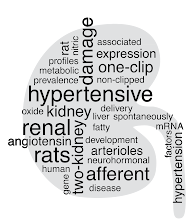
When surfing around looking for data on VO2max I found some interesting comparisons.
First we can have a look at different sports, you may remember that elite judo athletes had a maximal VO2 at around 60 ml/(min*kg). I guess most readers will have heard about the extremes of aerobic capacity. Who the best is depends on the unit used. Cross country skiers are the most extreme when compared to body weight. The highest ever published VO2max was Bjørn Dæhli, world champion from Norway. He had a VO2max over 90 ml/(min*kg), I have seen anything up to 96 ml/(min*kg), but cannot find the original publication.
If we ignore body weight, olympic rowers are reported with the highest oxygen consumption among athletes, but they can afford to be more massive than many other athletes and therefore get lower maximal uptake when related to body weight.
Then we can look at the real comparative physiology of endurance. Reported maximal oxygen consumption VO2max in running animals are quite a bit more impressive than humans. Note that these are extremes from non-original publications.
Human: 96 ml/(min*kg)
Horse, thoroughbred: 160 ml/(min*kg)
Dog, sledhound: 240 ml/(min*kg)
So, that's why I can run for an hour with my boxer, and when I am all done she wants to play fetch. For another hour.
Even more interesting than maximal aerobic capacity is the concept of aerobic scope. That is the difference between the rate of oxygen consumption at resting metabolic rate and at maximal aerobic exertion, i.e. VO2max.
Oxygen consumption at rest from original publications:
Human: 7.8 ml/(min*kg) (J Hum Kin vol 6, 2001, Andziulus et al)
Horse: 7.2 ml/(min*kg) (Am J Physiol vol 253, 1987, Weber et al)
Dog: 7.8 ml/(min*kg) (J Appl Physiol vol 19, 1961, Bailie et al)
This gives an aerobic scope of about 10 times in human endurance athletes, 20 times in racing horses and a whopping 30 times in racing dogs. This is not what is generally reported as aerobic scope because it is usually based on basal metabolic rate, which is a theoretical entity measured after sleep and fasting at a high ambient temperature. And, it is compared to popularly reported maxima for the different species. If you look at scaling and metabolic scope there are better articles with reproducible methods and averaged maxima e.g. Charles Bishop, Proc. R. Soc. Lond. B (1999) 266, 2275-2281.
In addition to being interesting, I am pretty satisfied to have combined science, dogs and photography in one post.

